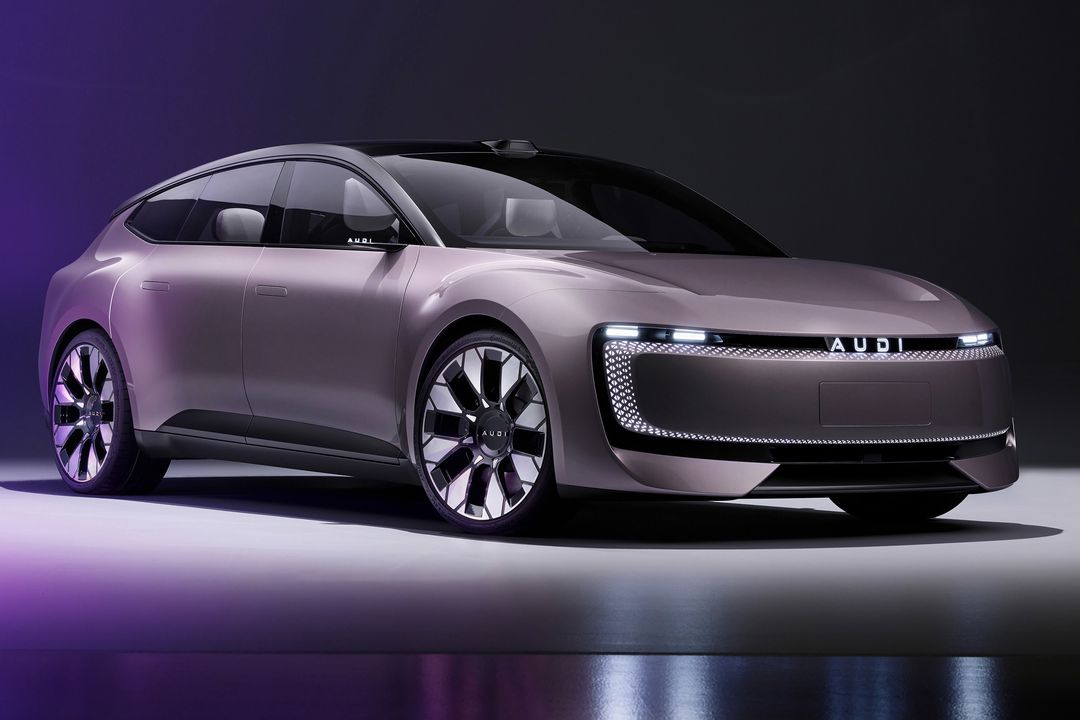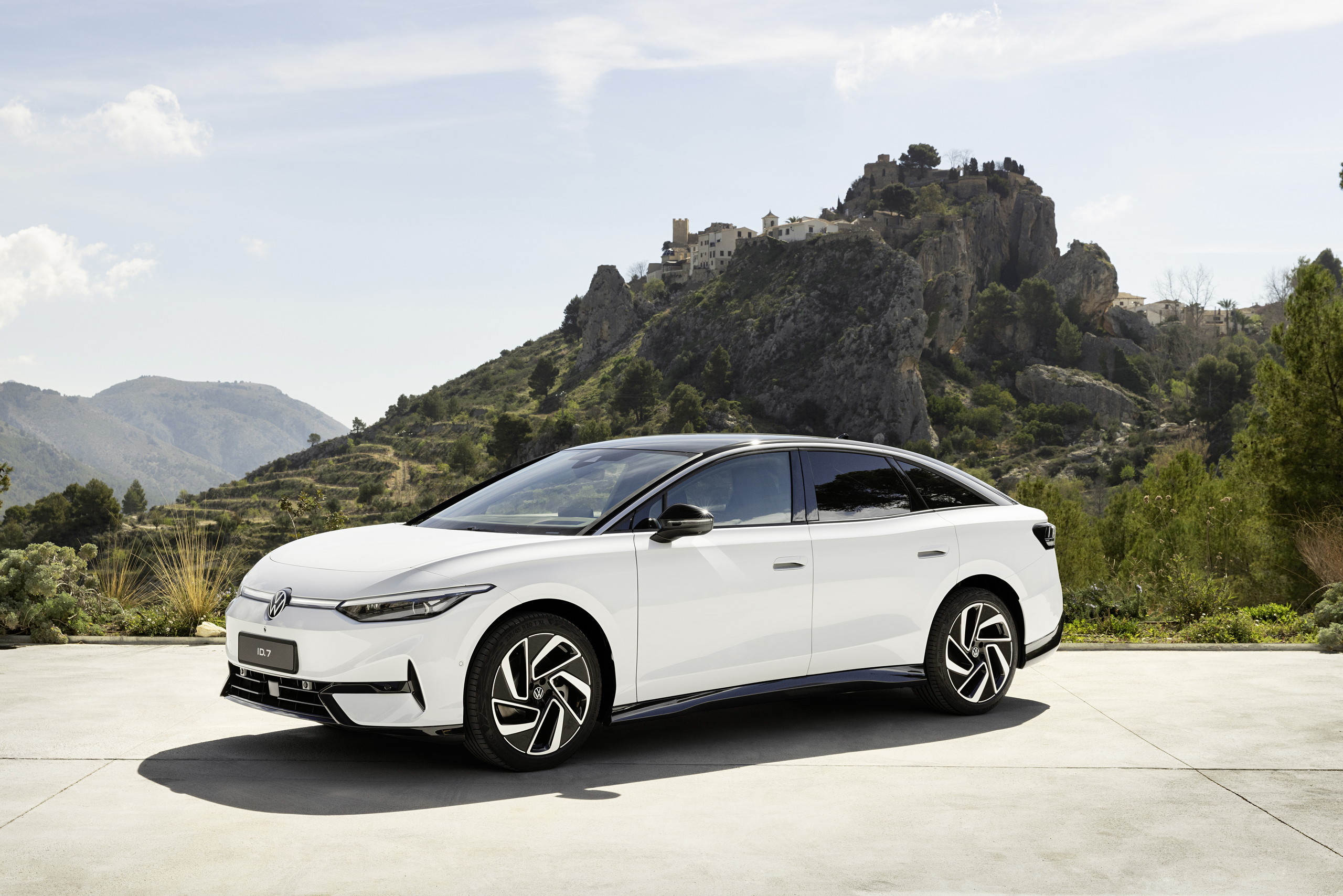In a bold and unexpected move, German automaker Audi has decided to shed its iconic four-ring emblem—an international symbol of luxury and heritage—and is introducing a new logo for the Chinese market: a clean, modernized “AUDI” in all caps according to the verge. This radical rebrand represents much more than a logo change; it is a powerful signal of Audi’s evolving approach to a challenging yet promising market. Audi’s reimagined branding aligns with China’s appetite for high-tech innovation, smart connectivity, and a future-oriented mindset. In a country where the auto industry is moving at lightning speed, Audi has recognized that it must reinvent itself if it wants to stay relevant.
Today, in Shanghai, Audi unveiled the new design with its concept electric Sportback. The familiar four rings, a logo that has adorned vehicles globally since the 1930s, were nowhere in sight. In their place stood a simple yet striking “AUDI,” written in uppercase, minimalist typeface. The vehicle itself also lacked another familiar feature: Audi’s “E-Tron” branding, a badge that has become synonymous with the automaker’s electric fleet worldwide.
To understand the significance of this change, one must delve deeper into the current landscape of China’s automotive market, which is not just rapidly expanding but also fundamentally different from its Western counterparts. The average Chinese car buyer is younger, more tech-savvy, and often deeply interested in connectivity and autonomous driving capabilities. In short, the market demands cutting-edge technology that integrates seamlessly with everyday digital life.
Audi’s shift comes at a crucial time. Sales figures reveal that Audi sold less than 10,000 vehicles in China in the first half of 2024—a sharp decline compared to the brand’s performance a decade ago when it was a dominant player among luxury automakers in the country. Facing intensifying competition from local electric vehicle (EV) startups like Nio, XPeng, and BYD, Audi’s new strategy in China isn’t just about capturing market share but about redefining its identity to resonate with a tech-hungry audience.
A Struggle for Relevance in a New Era
To appreciate why Audi is making such a drastic change, we have to look at the larger picture of luxury car brands in China. Audi was once a status symbol for China’s elite, often seen as the vehicle of choice for government officials and high-ranking professionals. However, the market has transformed dramatically over the past decade. Chinese consumers today are looking for more than just symbols of wealth and status; they want vehicles that are smart, connected, and eco-conscious.
While Audi remains a prestigious brand, the allure of its four-ring logo has lost some of its luster among younger consumers who now make up the majority of the automotive market in China. As car ownership has expanded to the millennial and Gen Z demographic, the emphasis has shifted to digital features and seamless integration with technology platforms such as Baidu, Alibaba, and Tencent. A conventional luxury brand alone is no longer enough to command the kind of attention Audi once enjoyed.
Audi’s CEO Gernot Döllner stated in a press release that the rebrand aims to appeal to China’s “more tech-savvy” consumers. This audience, he explains, expects “leading connectivity as well as automated driving.” Indeed, tech integration in China’s automotive market is progressing at an unprecedented rate. Chinese automakers have already begun incorporating advanced AI-driven features, ultra-fast 5G connectivity, and Level 3 autonomous driving systems, forcing established foreign brands to rethink their offerings in order to stay competitive.
Why Now? The Declining Sales and Rising Local Competitors
Audi’s timing is not accidental. The luxury brand’s sales in China have been on a downward trend for some time now, with less than 10,000 vehicles sold in the first half of 2024. This figure pales in comparison to the sales of Chinese automakers who are not only flourishing but are also setting the pace for innovation in electric vehicles (EVs) and connected car technologies. Startups like Nio, Li Auto, and XPeng are growing rapidly, fueled by government subsidies, technological innovation, and a cultural pride in homegrown brands.
Chinese automakers have increasingly set the bar with electric models that cater specifically to local tastes. Many feature advanced infotainment systems, digital assistants powered by AI, and social media integration—features that have not yet been fully embraced by European carmakers. By contrast, Audi’s branding in recent years has seemed, to some, outdated in a Chinese context, especially as local brands have capitalized on technology and domestic culture.
Audi’s rebranding is a clear acknowledgment that its former identity needs a refresh to keep up with this evolving market. The four rings, while iconic, may not communicate the tech-forward, digital-first attitude that appeals to China’s younger buyers. By shifting to a bold “AUDI” wordmark, Audi hopes to re-establish itself as a pioneer in automotive technology.
Rebranding with a Purpose: Appealing to China’s Tech-Savvy Market
Audi’s new wordmark isn’t just a design choice; it’s a strategic pivot aimed squarely at China’s technology-conscious consumer base. The new logo, with its sleek and modern typography, is a break from tradition, signaling that Audi is not just another luxury brand but one that is in tune with the pulse of modern China.
Döllner’s statement emphasized Audi’s intention to appeal to a younger generation that sees cars not just as vehicles but as extensions of their digital lives. In many ways, Chinese consumers have become accustomed to living with “smart” products, from AI-powered refrigerators to digital voice assistants, and they expect the same level of connectivity and automation in their cars. This is one reason why brands like Nio have succeeded in fostering brand loyalty in ways foreign brands have struggled to match.
In leaving behind the “E-Tron” branding on this new concept car, Audi also appears to be distancing itself from its older electric models, in favor of something that feels fresh and distinctly tailored for China. The decision to step away from this globally recognized brand name highlights Audi’s commitment to localizing its approach rather than imposing a “one-size-fits-all” strategy across all markets.
Navigating Cultural Nuances and Changing Expectations
Understanding and adapting to cultural nuances has been a steep learning curve for many Western companies entering China, and the automotive sector is no exception. Chinese consumers today are not only more tech-focused but are also keenly interested in brands that respect and reflect their cultural identity. As local automakers flourish, the perception of imported brands has shifted from aspirational to outdated, especially if they do not embrace or cater to local trends.
Audi’s decision to remove the iconic four rings in China is not just a move to look modern but a nod to the idea that brand identity can—and should—be flexible. For a long time, Audi has relied on its legacy and brand image. However, the success of this rebrand will depend on Audi’s ability to show that it understands the importance of connection, both technological and cultural, in China.
The Road Ahead: Challenges and Opportunities
The question now is whether Audi’s rebrand will be enough to attract the kind of attention it hopes for. The stakes are high, as Audi competes with both local startups and established global players like Tesla, which has also worked hard to make its vehicles appealing to Chinese customers. In addition, government policies in China are increasingly favorable toward domestic automakers, making it more challenging for foreign brands to regain footing.
Moreover, Audi must now make sure that the rebrand doesn’t alienate its existing customers in China who still appreciate the heritage that the four rings symbolize. The challenge will be to strike a balance between modernizing its identity for a younger demographic while retaining the brand loyalty that it has built over decades. This delicate dance of respecting legacy while embracing innovation is one that many foreign brands are grappling with as they navigate China’s unique market landscape.
What This Rebrand Says About the Future of Audi
Audi’s new branding decision for China is a powerful statement about the future direction of the company. It reflects an acceptance that, to survive and thrive, even the most established brands must be willing to evolve. Audi’s pivot signals an openness to experimentation and a willingness to break away from tradition to stay competitive in the face of rapid innovation.
This rebrand could serve as a blueprint for other international brands looking to remain relevant in the Chinese market. The decision to embrace a new visual identity tailored to local tastes could help Audi re-establish itself as a brand of choice for a new generation of Chinese drivers. If successful, this move could open doors for other brands to experiment with more localized and market-specific strategies in China.
Audi’s venture into new branding territory may just be the beginning of a much broader shift among global automakers to adapt to China’s dynamic market. And as the world watches Audi’s bold experiment, one thing is clear: in the race to capture China’s tech-savvy consumers, tradition alone isn’t enough to guarantee success.
In shedding the four rings in favor of a more streamlined “AUDI” wordmark, Audi has taken a significant step to redefine itself. It’s a move that signals not only a desire to adapt but also a willingness to embrace the future of automotive technology. In doing so, Audi has shown that sometimes, letting go of a familiar past is the best way to drive toward an ambitious future. Read More














REWARD CODE: AUDI2024